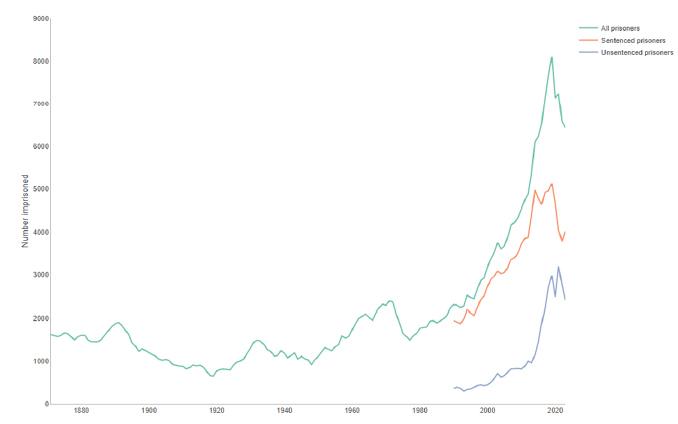On 30 June 2024, Victoria’s prison population was 5,918, a decrease of 8.1% from the previous year. Of those 5,918 people, 33.8% of prisoners (1,998 people) were unsentenced (awaiting trial or sentencing), up from 12.8% in 1993. The remaining 66.2% of prisoners were serving a sentence of imprisonment.
Between 1871 and 2024, Victoria’s prison population increased fourfold, but it fluctuated significantly, sometimes influenced by major world events.
Victoria’s prison population has steadily increased since 1977, from 1,488 to a high of 8,101 in 2019. In the five years after 2019, the prison population declined 26.9% to 5,918 in 2024.
Number of people in Victoria’s prisons

Sources: A. Freiberg and S. Ross, Sentencing Reform and Penal Change: The Victorian Experience (The Federation Press, 1999); Australian Bureau of Statistics, Prisoners in Australia (2024); Australian Institute of Criminology, Australian Prison Trends (1993).
Notes: The sentenced and unsentenced prisoner numbers may not sum to the total prisoner number because the total includes post-sentenced prisoners. Additionally, the sum of individual values may not equal the total due to deliberate changes in the original data source for confidentiality reasons (statistical perturbation). See Prisoners in Australia Methodology (2024).
Prison population data for 1872, 1899 and 1900 is missing in the original source. The values given for these years are an average of the number of prisoners in the year immediately before and the year immediately after.
Unsentenced prisoners are referred to as ‘remandees’ in Australian Prison Trends (1993).